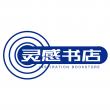
化学化工专业英语
正版保障 假一赔十 可开发票
¥ 9.12 2.0折 ¥ 45 全新
仅1件
广东广州
认证卖家担保交易快速发货售后保障
作者董坚主编
出版社浙江大学出版社
ISBN9787308078351
出版时间2010-08
装帧平装
开本16开
定价45元
货号6672129
上书时间2025-01-01
- 最新上架
商品详情
- 品相描述:全新
- 商品描述
-
导语摘要
本书共28个单元。第1部分共8个单元,主要是介绍化学化工学科的一些入门基础知识,包括化学实验和化工工艺方法、仪器工具和化合物命名等。第2部分共16个单元,内容覆盖无机化学、有机化学、分析化学、环境化学、物理化学、生物化学、高分子化学、药物开发、基础化工等,既从化学化工的历史沿革的角度,又从学科发展的热门领域的角度,介绍化学和现代化工的成就。第3部分共4个单元,介绍常见专业文献阅读和撰写技能知识,包括学术论文、国际发明专利基础知识和文献选读。第4部分对化学化工各个分支领域中的常用的专业术语提供简明扼要的解释,也以图解的方式列出了基本实验工具,还对400多位著名化学家和工程师做了简要介绍,此部分内容可作为参考资料使用。本书配有教学辅助资料,供征订了本书的教师参考。
商品简介
This book selects a number of breakthroughs and examples in the development of new energy technology,biotechnology, novel materials and drugs, environmental technology, and other fields. A few historic events and figures designated by the American Chemical Society as "Chemical Landmarks" are adopted. Also featured in the book are a group of original papers and patent documents in the cutting-edge fields of chemistry and chemical industry. Stories about how the chemists and engineers vigorously explored and made great inventions are described in the book. Following the texts in each unit are notes, words with pronunciations and meanings, quiz including exercises and drills for reading comprehension and short compositions, and in-class discussion themes.This book also explains in detail how to comprehend and utilize papers and patent documents, and how to write and revise papers in practice.
The book contains a significant amount of technical terminology. Lists of common glossaries with concise explanations are provided in the end of the book. Basic laboratory tools are also illustrated graphically. Records of famous chemists and engineers with their lives and areas of expertise can be used as a reference. This book serves as a textbook in bilingual education in colleges for juniors and seniors, as well as graduate students, who are non-native speakers of English but majoring in chemistry, applied chemistry, chemical engineering, materials chemistry and related disciplines. The book is also an indispensable working resource for scientists, chemists,and engineers in chemical industry and academia. This book is printed in bicolor to improve readability.
目录
Part 1 Laboratory Techniques and Chemical Nomenclature
Unit 1 Chemistry Laboratory Techniques-Recrystallization
Unit 2 Chemistry Laboratory Techniques-Acid-Base Titration
Unit 3 Chemistry Laboratory Techniques-Isolation, Purification, and Identification of Caffeine
Unit 4 Continuous Processing for Scaling Up Laboratory Processes
Unit5 Nomenclature of Inorganic Compounds (1)
Unit 6 Nomenclature of Inorganic Compounds (2)
Unit7 Nomenclature of Organic Compounds (1)
Unit 8 Nomenclature of Organic Compounds (2)
Part 2 Chemical Science and Industry: History and Frontier Topics
Unit 9 Neil Bartlett and Reactive Noble Gases
Unit 10 Birth of Aluminum by Electrolysis
Unit 11 Jack Kirkland and HPLC Silica Packings
Unit 12 Arnold O. Beckman and the pH Meter
Unit 13 Victor Grignard and Grignard Reagent
Unit 14 Georg Wittig and Wittig Reaction
Unit 15 Developments in Lithium Battery Research
Unit 16 Clean Coal Technology
Unit 17 Frederick Sanger
Unit 18 Discovery and Development of Cimetidine
Unit 19 Wallace Carothers and the Development of Nylon
Unit 20 High Performance Carbon Fibers
Unit 21 Human Health Effects of Air Pollution
Unit 22 Flavor Formation in Meat Products
Unit 23 Herbert Dow and His Dow Chemical
Unit 24 Development of Kevlar in DuPont
Part 3 Original Literature
Unit 25 Critical Reading of a Scientific Paper
Unit 26 How to Write a Scientific Paper
Unit 27 How to Submit a Paper and Ethical Issues
Unit 28 Fundamentals of Patents
Part 4 Commonly Used Terminology and References
Appendix 1 Glossary of Terms Used in General and Inorganic Chemistry
Appendix 2 Glossary of Terms Used in Organic and Biological Chemistry
Appendix 3 Glossary of Terms Used in Analytical and Physical Chemistry
Appendix 4 Element Names and Their Pronunciation
Appendix 5 A List of Chemists
Appendix 6 A List of Chemical Engineers
Appendix 7 United States Patent Example: US 6677362
Appendix 8 Basic Laboratory Equipment
内容摘要
Load a small amount of solid into a test tube, followed by adding about one milliliter of the testsolvent. If the solid dissolves immediately at room temperature, the solvent is not suitable forrecrystallization. Repeat this process with another test solvent using a clean test tube. If the solid doesnot dissolve, heat up the test tube using a hot water bath whose temperature is set at the boiling pointof the test solvent. If the solid still remains, then this solvent is not good, either. Repeat with othersolvents until the solid remains at room temperature, but dissolves in the solvent with the temperatureat the boiling point, indicating a good recrystaUization solvent.
In the second step, the solid to be recrystallized is dissolved in the hot suitable solvent. TwoErlenmeyer flasks (one for the solvent and the other for the crystals), a hot plate, a disposable pipetand bulb, finger cots, and some boiling stones are ...
主编推荐
本书共28个单元。第1部分共8个单元,主要是介绍化学化工学科的一些入门基础知识,包括化学实验和化工工艺方法、仪器工具和化合物命名等。第2部分共16个单元,内容覆盖无机化学、**化学、分析化学、环境化学、物理化学、生物化学、高分子化学、药物开发、基础化工等,既从化学化工的历史沿革的角度,又从学科发展的热门领域的角度,介绍化学和现代化工的成就。第3部分共4个单元,介绍常见专业文献阅读和撰写技能知识,包括学术论文、国际发明专利基础知识和文献选读。第4部分对化学化工各个分支领域中的常用的专业术语提供简明扼要的解释,也以图解的方式列出了基本实验工具,还对400多位著名化学家和工程师做了简要介绍,此部分内容可作为参考资料使用。本书配有教学辅助资料,供征订了本书的教师参考。
【目录】
精彩内容
This book selects a number of breakthroughs and examples in the development of new energy technology,biotechnology, novel materials and drugs, environmental technology, and other fields. A few historic events and figures designated by the American Chemical Society as "Chemical Landmarks" are adopted. Also featured in the book are a group of original papers and patent documents in the cutting-edge fields of chemistry and chemical industry. Stories about how the chemists and engineers vigorously explored and made great inventions are described in the book. Following the texts in each unit are notes, words with pronunciations and meanings, quiz including exercises and drills for reading comprehension and short compositions, and in-class discussion themes.This book also explains in detail how to comprehend and utilize papers and patent documents, and how to write and revise papers in practice.
The book contains a significant amount of technical terminology. Lists of common glossaries with concise explanations are provided in the end of the book. Basic laboratory tools are also illustrated graphically. Records of famous chemists and engineers with their lives and areas of expertise can be used as a reference. This book serves as a textbook in bilingual education in colleges for juniors and seniors, as well as graduate students, who are non-native speakers of English but majoring in chemistry, applied chemistry, chemical engineering, materials chemistry and related disciplines. The book is also an indispensable working resource for scientists, chemists,and engineers in chemical industry and academia. This book is printed in bicolor to improve readability.
— 没有更多了 —












以下为对购买帮助不大的评价